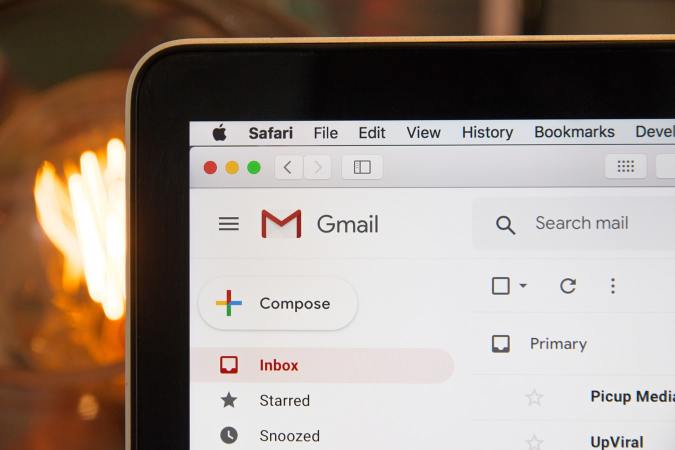
An in-person intro can be harrowing. But thanks to the internet & our advice, you can put your best foot forward and write a great introduction email.
An in-person intro can be harrowing. But thanks to the internet & our advice, you can put your best foot forward and write a great introduction email.
In our noisy, bustling world, where social media really isn’t so social, attention spans are shrinking by the minute, and people love to tell you how “crazy busy” they are, there can be little room or time to stand out. That’s why, when it’s time to introduce yourself in an email, you need to cut through the noise with a clutter-free, purposeful outreach that will hit all the right notes.
When Should You Introduce Yourself in an Email?

Source: Unsplash/Stephen Phillips
Of course, there’s no need for introductions when you know each other and you don’t need to really introduce yourself to the customer support rep when you’re writing about a product defect. But there are some emails that simply work a lot better when you’re introducing yourself correctly. In most cases, you’ll have a specific goal in mind. Maybe you’re looking to strike up a business relationship, start a conversation with a potential employer, or make industry connections for the future? Your introduction could make or break the whole thing.
Psst! If you’ve just been to a job interview and want to send a follow-up email to the recruiter, you might like to read our article on How to Send a Follow-Up Email After an Interview.
What Are the Advantages of Introducing Yourself in an Email?

Source: Unsplash/Charles Deluvio
In 2023, over 345 billion emails are sent every day. Every year, that number gets quite a bit larger (in 2022, it was 333 billion). This tells us that the electronic version of the good old-fashioned post won’t be going out of style soon. There are many reasons to love email, especially when you need to introduce yourself, so we’ve rounded up a few advantages to introducing yourself in an email.
1. Emails Aren’t So Intrusive
Unlike a phone call that demands immediate attention, emails can be read when and where it suits the recipient, keeping anxiety and irritation levels in this interaction to a minimum.
2. You Can Take Your Time to Write the Perfect Email
A spur-of-the-moment verbal or telephonic exchange can be a good thing, but for many of us, the time to produce a well-crafted email introduction is invaluable to making a great first impression. You can make sure you don’t blurt out something you didn’t think through first.
3. You Control the Tone of Your Email
Whether you’re writing to a fancy investment firm or a trendy new start-up, you have the upfront advantage of being able to research your addressee before you write to them. Whether this means your tone of voice is serious, light-hearted, or somewhere in between, make sure it’s appropriate, sincere, and respectful. A lot of the time, you can gauge the tone of voice they use to communicate from their website, blog, social media, or even job listings and mirror it to give the clear impression that you really belong there.
4. Emails Are on the Record
A quick chat or call might be forgotten soon after the interaction, but an email has staying power. With an email introduction, the recipient and the sender both have something tangible to refer to and follow up on if need be.
Quick tip: Follow up on an introductory call or verbal exchange with a quick email to cement the conversation and have it on record.
5. Emails Make Follow-Ups Easy
If the initial response to your original introductory email is particularly slow, you don’t have to start from scratch. Simply forward the original introductory email you sent along with a brief follow-up message, referring back to the original. You can also pick up the phone and refer to your first email in a personal conversation, showing that you really are interested and proactive.
Quick tip: Radio silence after your second email may indicate a lack of interest, an incorrect email address, or a very busy recipient. Here, it might benefit you to call the company you’re reaching out to, in order to find out if they still exist, if your recipient still works there, or maybe they’re just out on a short leave of absence.
What Should an Email Introduction Include?

Source: Unsplash/Allie
1. An Informative but Simple Subject Line
The first step you want your recipient to take once you’ve sent them an introduction email is to open your email. An over-complicated subject line teeming with special characters and emojis will probably go straight to spam. On the off chance it doesn’t, your recipient probably won’t want to open it and, in the worst case, remember your name with a negative association.
2. An Appropriate Greeting
An email introduction is not the place to greet the recipient like you would a friend. Even if the company you’re reaching out to has a less formal approach to business, you’ll want to keep your greeting (in your first outreach, at least) formal but friendly.
Make the effort in advance to find out the name of the person you want to introduce yourself to and address them directly in your email. A simple “Dear Amy,” or ”Dear Ms. Johnson” will do.
Quick tip: In some countries, it’s considered impolite to address someone by their first name in your first professional email exchange, so make sure that, wherever you are in the world, you are sensitive to how the recipient of your email introduction might want to be addressed.
3. Make It about Them
When you introduce yourself in an email, it’s important to start by putting the recipient at the center of your email outreach. They might be from a company whose values deeply resonate with you; they could be working on exciting projects you’d love to be a part of; or you might admire them for their philanthropic work. Your email introduction should start off with a reference to whatever attracted you to them in the first place. It shows you’ve done your research and you’re a potentially good fit.
4. Mention a Mutual Contact
If you and the recipient share a mutual connection, communicate this at the start of your email, referring to your connection with this person and saying that they recommended getting in touch with the recipient for x or y reason. This is also a helpful bit of information to include in your subject line.
5. State the Purpose of Your Email Introduction
Once you’ve established a link with your recipient, explain why you’ve emailed them. Maybe you want to work at their company, collaborate with them on future projects, or deepen your social network. Whatever the reason for your email introduction, be clear about what you really want from this connection, tie it to what attracted you to them in the first place, and explain how the connection you are proposing could add value to them.
6. Include a Call to Action
Be clear about what action you want the recipient of your email to take. Should they respond to your email introduction with more information or let you know if they have time to have a call with you? Whatever the call to action is, make sure it is clear.
Quick tip: When you’re writing an email, you can’t convey your tone of voice very well. That’s why your questions should be clearly formed and be actual questions instead of statements eliciting a response. The same goes for requests—be clear and concise while being polite. Use a call to action in a sentence if you want something from the recipient.
7. Show Them How and When to Contact You
It’s always good practice to let your email recipient know when you’re available (to talk, email, or meet up) and how best to contact you (via phone, email, or WhatsApp). If you don’t leave any uncertainties, the recipient doesn’t have to think about it and can simply schedule that meeting with you.
8. Say Thank You
The person receiving your email introduction might not send you the reply you were hoping for. That’s just a fact of life. It’s still good manners to thank them in advance just for reading your email and considering your proposal. It’s polite and won’t do any harm. Always be gracious in your email introductions, signing off with gratitude and a simple thank you.
9. Sign off with Another Greeting
Depending on the tone of your email introduction, you’ll want your exit greeting to match it. If you started out with “Dear Mr. Conrad,” then you might want to sign off with something like “Kind regards,” or “All the best,” followed by your name.
10. Provide Contact Information
Placing your contact details or email signature at the end of your introduction email, beneath your name, is both courteous and could help you out in the long run. In this section, you can include your designation or current job title, your contact number, your email address, and a link to your online portfolio or website (if you have one). You’re saving them time, making yourself look professional, and eliminate mistakes and irritation.
11. Check, Check, and Check Again
Don’t undermine your efforts to introduce yourself via email with poor attention to detail. Whether your introductory email is for a job application or to establish a fresh career path, there is no reason to send an introduction email riddled with errors. Check your email for any spelling or grammar errors, use the spell check tool on your desktop or mobile device, and, if all else fails, get your grammar geek friend or relative (we all have one) to look over it for you. A pro tip: Many email tools like Gmail offer a delayed sending feature, meaning that after you hit “Send”, you have up to 30 seconds or so to recall the message. I promise you, that feature has saved many an attachment from being sent out separately. For some reason, you think of something the second you hit “Send.”
There you have it! Follow our advice on how to introduce yourself in an email, and you’ll be ready to make a great impression in your introductory outreaches. Good luck!



